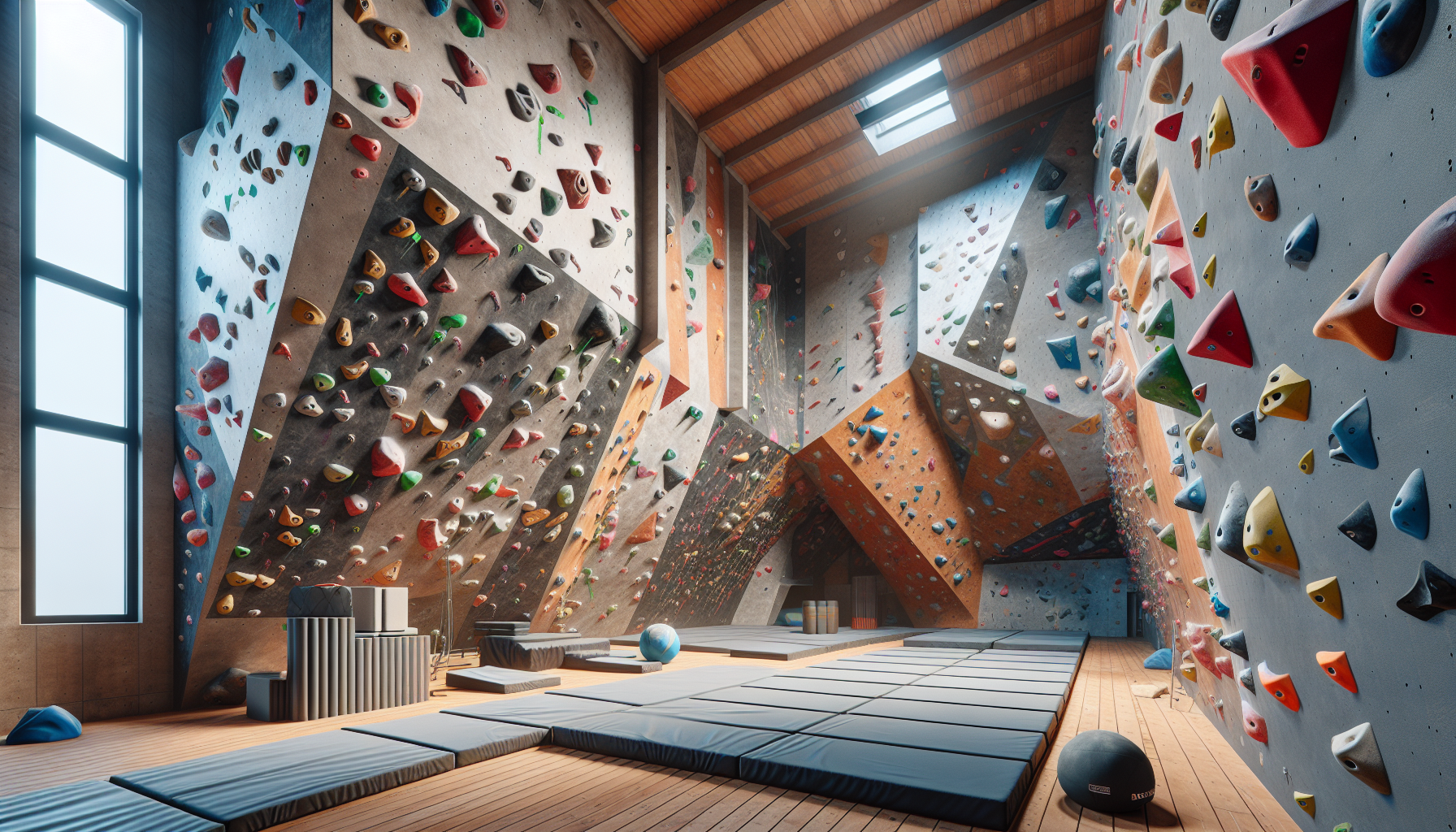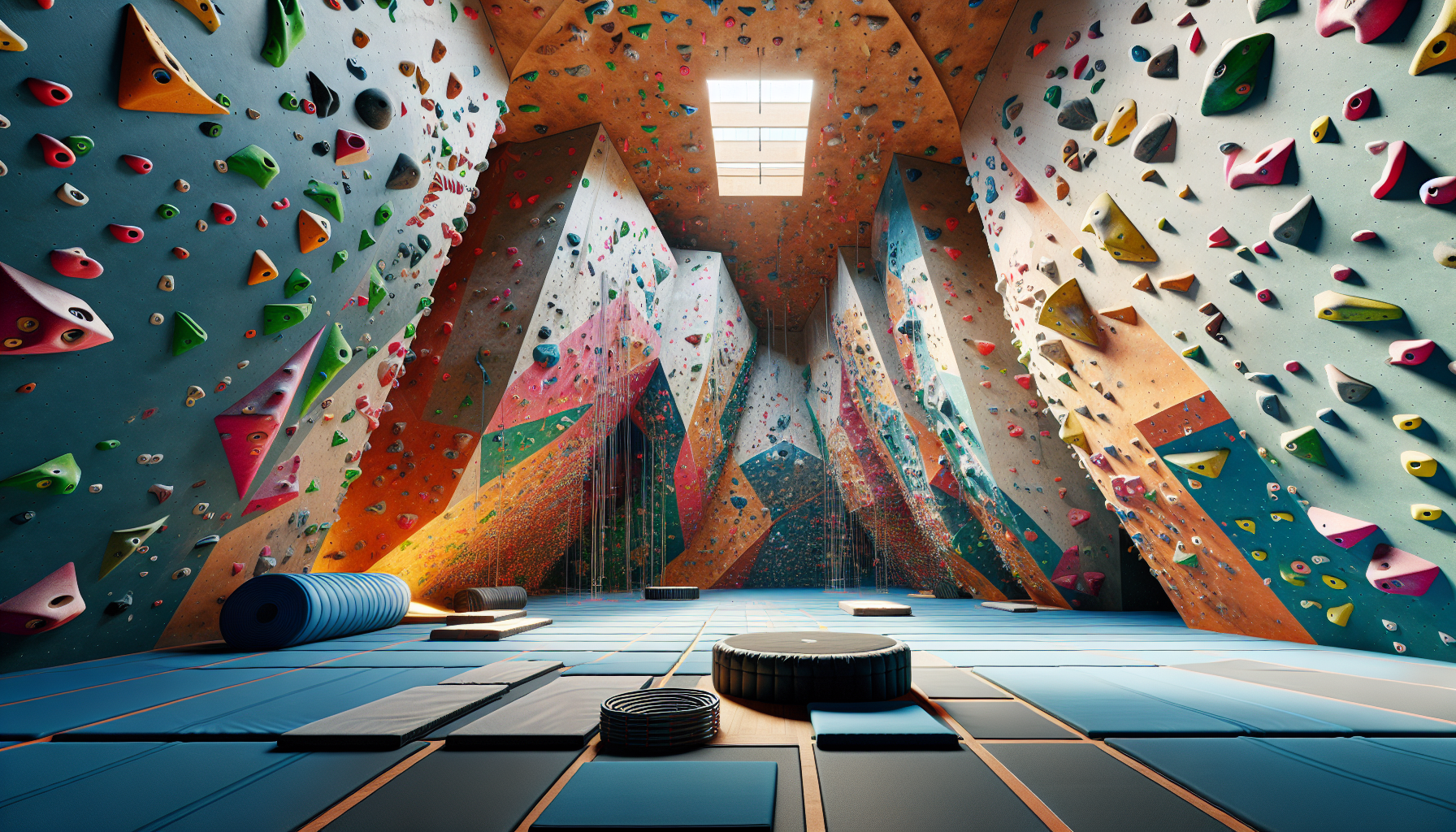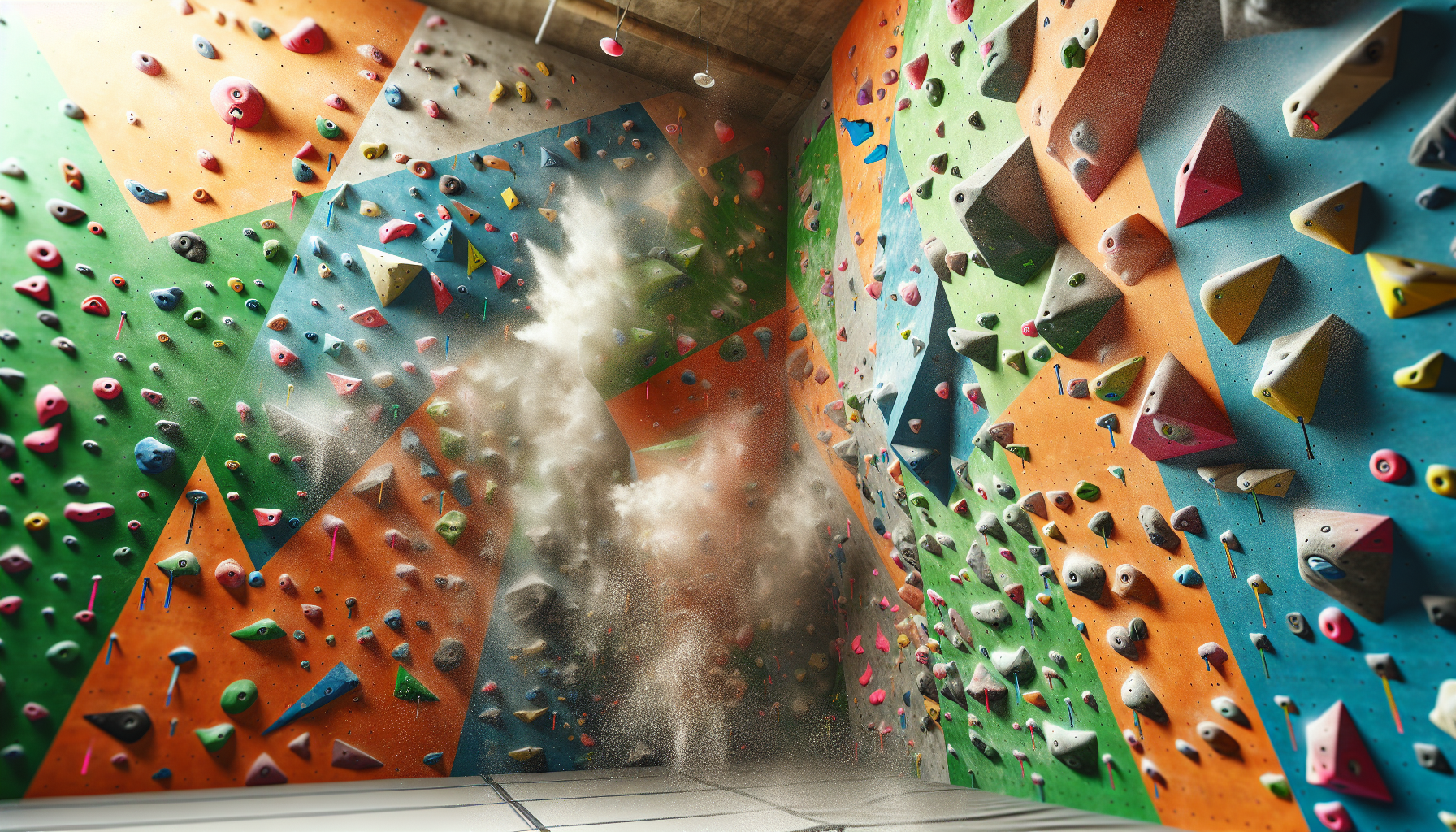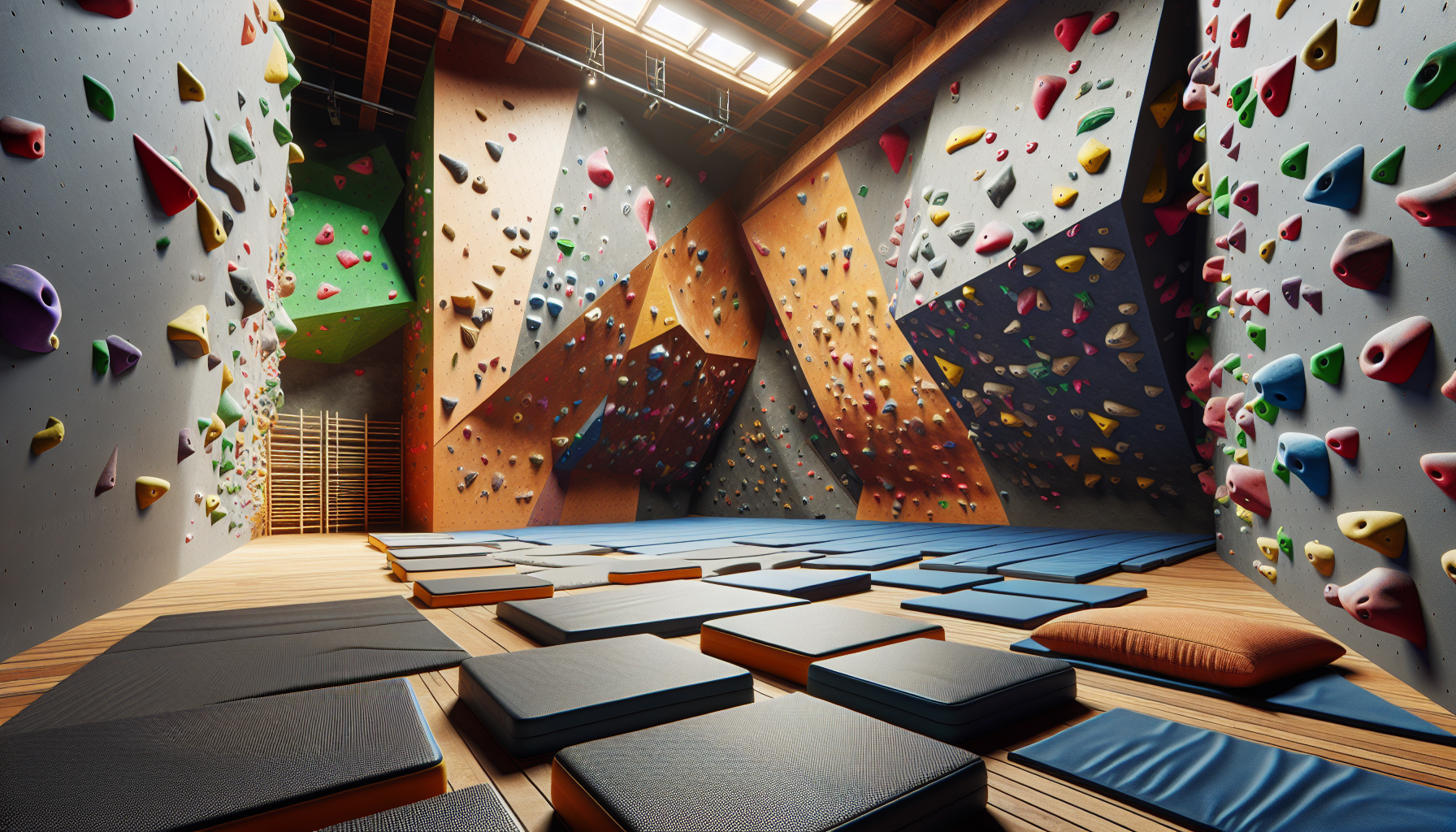
Exploring the world of climbing indoors can lead to exhilarating experiences and new friendships. With a plethora of innovative climbing walls available, enthusiasts can tackle bouldering problems that suit a wide range of skill levels.
New climbers can easily step into this exciting sport through guided sessions, especially when they wear specialized climbing shoes for optimal performance.
The vibrant atmosphere within these gyms nurtures a sense of community, as climbers gather for themed events to challenge their grip strength against one another.
Amenities such as cafes offer a cozy spot to unwind, enhancing the overall experience and motivating individuals to return regularly for their indoor rock climbing adventures.
Choosing The Right Bouldering Gym
Embarking on a climbing adventure begins with selecting the ideal venue to hone your skills. An exceptional facility should feature a variety of bouldering routes suitable for all climbers, from beginners to advanced practitioners.
Pay attention to whether the gym offers sufficient training walls that cater to different techniques, allowing you to build strength effectively.
Safety is paramount; look for well-placed crash pads and meticulously maintained fall zones that protect climbers during their efforts.
A positive community vibe can significantly enhance your experience, fostering motivation and enjoyment. Joining fellow climbers for events and invigorating workshops not only builds skills but also creates lasting connections, enriching your journey through this thrilling sport.

Finding The Best Climbing Holds
A climber’s journey is heavily influenced by the variety of holds they encounter. Exploring different types of holds significantly shapes climbing technique, as each option presents unique challenges and opportunities.
For instance, engaging with jugs can facilitate dynamic moves, allowing for a more efficient ascent while promoting a relaxed stance.
Meanwhile, advanced practitioners often rely on crimps, which require precise fingerboard training to master.
The influence of these holds impacts body positioning and overall movement efficiency on the wall. Evaluating the options during gym climbing can lead to smarter strategies, while regular practice with varied holds can enhance performance in bouldering competitions.
Climbing Holds
- Different holds, like jugs and crimps, require distinct techniques for optimal use.
- Practicing with varied holds enhances climbing efficiency and body positioning.
- Engaging with jugs can encourage more dynamic movements during ascents.
- Regular exposure to diverse holds can improve performance in bouldering competitions.
Essential Bouldering Techniques
Improving your performance in the world of climbing requires a solid grasp of various techniques. Learning essential movements allows athletes to conquer both indoor bouldering walls and natural rock formations with greater agility.
Dynamic techniques play a pivotal role, enabling climbers to extend their reach to holds effectively.
Making adjustments based on wall features, especially during overhangs, can significantly enhance your climbing prowess.
Proper body positioning and mindful foot placements create valuable leverage, helping prevent common errors that might impede your progress. Engaging with the climbing community helps refine these strategies, offering insights that are vital for growth and success in this exhilarating sport.
Developing Grip Strength For Climbing
The success of any climber is often determined by their physical capabilities, with particular emphasis on strength that is crucial for tackling vertical walls. A robust grip not only enhances individual performance but also contributes significantly to overall climbing efficiency.
Research indicates that climbers who possess superior grip strength can ascend higher climbing grades and tackle increasingly challenging routes.
To effectively enhance grip strength, practitioners can incorporate exercises such as dead hangs and fingerboard training into their routine.
These workouts are vital for improving chalk use and grip endurance, essential for navigating complex movement patterns.
When focusing on these exercises, prioritizing proper technique will help prevent injuries while maximizing gains.
Grip Strength in Climbing
- Climbers with superior grip strength can ascend higher climbing grades.
- Effective grip training helps improve chalk use and grip endurance.
- Incorporating exercises such as dead hangs and fingerboard training is essential for enhancing grip strength.
- Prioritizing proper technique in grip training reduces the risk of injuries.
Navigating Bouldering Routes Effectively
Climbing enthusiasts often seek ways to enhance their skills and tackle the various challenges presented by their sport. Understanding the difficulty of routes is crucial for assessing your progress in the warmup area and beyond.
Evaluating the grades and ratings of climbs provides insight into the necessary techniques required.
The ability to identify key holds, such as crimps and slopers, plays a significant role in effective progress.
As climbers engage in strength training, they build the physical endurance needed for tackling more advanced bouldering challenges. Visualizing the climbing path enables better strategizing of movements and strategies.
Cultivating proper footwork and body positioning is essential for maintaining balance during ascents. Tracking progress through a climbing log not only highlights improvements but also fosters a sense of accomplishment in one’s journey through outdoor climbing.
Importance Of Warmup Areas
Effective preparation is a vital component of any climber’s routine, enabling them to face various climbing challenges with confidence. In this context, designated zones for initial stretches and movements significantly contribute to minimizing injury risks.
Research indicates that insufficient warm-up practices correlate with a considerable number of climbing injuries.
Well-structured areas for warming up improve muscle elasticity and enhance joint mobility, both essential for engaging in demanding climbing activities.
These environments promote better involvement in fitness routines, particularly during climbing workshops and festivals. Incorporating dynamic stretching techniques and sport-specific motions activates the muscle groups relevant to climbing, making it easier for participants in youth climbing sessions or bouldering leagues to perform at their best.
Climbing Preparation
- Insufficient warm-up practices are linked to a significant number of climbing injuries.
- Well-structured warm-up areas enhance muscle elasticity and joint mobility.
- Dynamic stretching techniques improve performance in youth climbing sessions and bouldering leagues.
- Designated zones for initial stretches contribute to injury risk reduction during climbing activities.
Joining The Climbing Community
Embracing the camaraderie found in this adventurous sport opens doors to growth and improved performance.
Understanding community dynamics is essential; it fosters a sense of belonging and connection among climbers.
Networking with climbing partners not only enhances your climbing safety but also builds trust and motivation.
Finding reliable partners through community platforms can significantly boost your confidence on the rock.
Engaging with others provides emotional support during challenging climbs, making it easier to achieve your fitness training goals.
Participating in events deepens relationships and allows for the exchange of techniques, including drop knees and alignment for better performance.
Effective Training Programs For Bouldering
Climbers looking to improve their performance must focus on targeted strategies that enhance their abilities. Structured training programs are vital for developing both upper body strength and technique, which are essential components of success in this sport.
By systematically addressing skill improvement, athletes can engage in drills that refine footwork and climbing efficiency.
Incorporating agility training into routine practice helps climbers navigate complex problems with greater ease.
Recovery and flexibility exercises are equally important, as they play a significant role in injury prevention, allowing for more consistent practice sessions. Evaluating performance against measurable goals can significantly impact progress, ensuring that climbers are well-prepared for varying route difficulty and challenges they might encounter.





